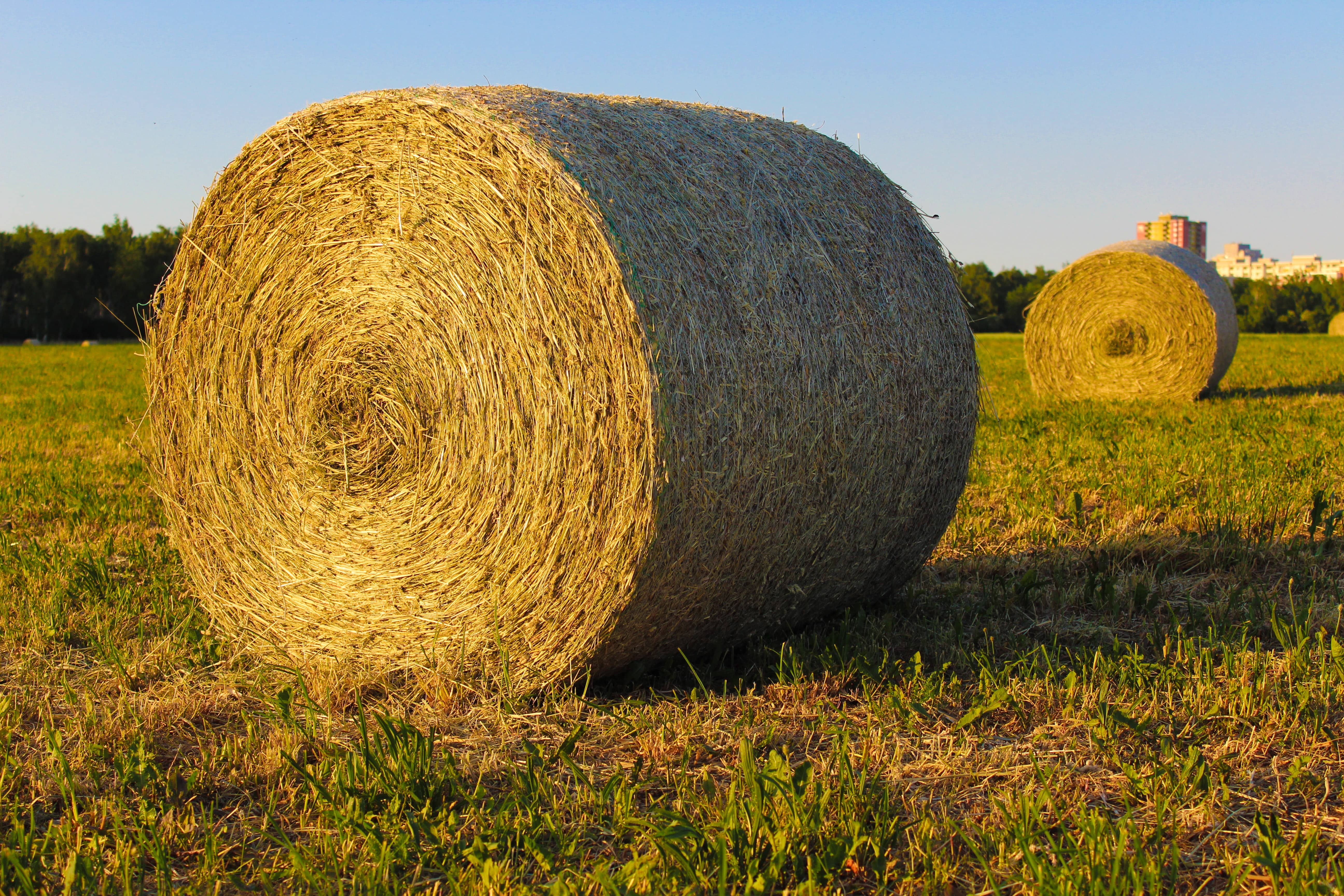
(NDAgConnection.com) – Moisture content of forage at baling has a direct impact on bale heating and subsequent forage nutrient content at feeding, says North Dakota State University Extension forage crops production specialist James Rogers.
“Managing moisture content of forage at baling this year was a challenge,” says Rogers. “For many it seemed that at the point hay was dry enough to bale, a rain shower would delay baling.”
Controlling moisture at baling can reduce damage to the hay by microorganisms.
“Just like everything that surrounds us, forage plants are covered in microorganisms,” Rogers says. “These organisms survive in either oxygen-rich (aerobic) or oxygen-depleted (anerobic) environments. When hay is dried to a low moisture content, aerobic organisms cannot survive. If hay is baled when moisture is too high, aerobic organisms survive inside the bale. Since they are living organisms, a food source is required, which they obtain from soluble carbohydrates in plant cells. These organisms also respire, giving off carbon dioxide and generating heat which leads to multiple consequences.”
Moisture content at baling is the number one driver of the severity and duration of bale heating. This relationship between bale moisture content and heating holds true regardless of bale size. However, as bale size and density increase, the intensity of heating tends to increase. For example, if a small rectangular bale and a 5-foot diameter round bale were both baled at 20% moisture content, the round bale would reach a peak higher internal temperature compared to the small rectangular bale.
Results of heat damage to hay nutrient content are multiple. First is the effect it can have on crude protein content. Crude protein content is affected when nitrogen content of a hay (nitrogen x 6.25 = crude protein) becomes linked to carbohydrates through a chemical reaction (Maillard), which is a result of heat generation from baling with high moisture.
Well-cured hays will contain a small percentage of heat damaged or insoluble protein, but when this percentage is greater than 10%, crude protein needs to be adjusted down to account for the insoluble protein, says Rogers.
A second and often over looked impact of heating is reduced energy content of hay. As aerobic organisms acquire soluble carbohydrates from plant cells, the forage’s energy, often expressed as Total Digestible Nutrient (TDN) content, decreases. When TDN content is lowered, fiber density (neutral detergent and acid detergent fiber) increases. As a result, heat damaged hay can have reduced crude protein and energy and increased fiber density resulting from excess moisture content and heating. In addition, dry matter loss, visible mold, odors, off colors and dust often occur with heating that can lead to refusal and respiratory issues in livestock offered heat damaged hay.
“Controlling moisture at baling is the best way to reduce potential for heat-damaged hay,” says Rogers. “Target moisture at 20% or less for small square bales and 16% to 18% for large bales. If hay has been baled and moisture content at baling was elevated, test the hay for nutrient content prior to feeding. This gives you an opportunity to adjust supplementation if necessary.”
Another management strategy is proper storage.
“Avoid indoor storage of high-moisture bales as spontaneous combustion can occur,” says Rogers. When storing outdoors, stack in rows with space between rows to allow for air flow. Store in a way that allows for the escape of excess moisture from hay and a continuation of drying.”
Welcome rainfall this spring and summer has given many livestock producers the opportunity to replenish hay supplies decimated by drought and winter feeding demands. While welcome, the moisture has made hay curing a challenge.
“Moisture content at baling is the main factor in determining bale preservation and nutrient content over time,” says Rogers. “Excessive moisture at baling leads to bale heating and a potential reduction in crude protein and TDN but, an increase in fiber density. The only way to know what these exact losses are is to test. As they say, without a test it is only a guess.”
Contact your county NDSU Extension agent for help testing your forage quality.
